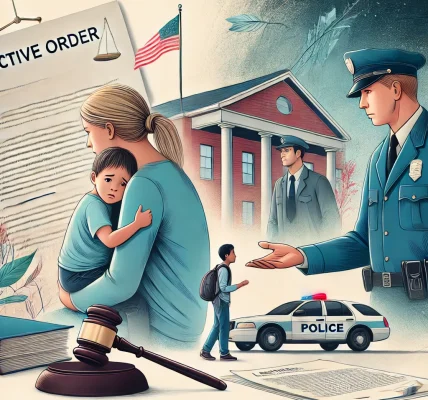Introduction
Adoption is a life-changing legal process that allows individuals or couples to become the legal parents of a child who is not biologically their own. While the concept of adoption is straightforward, the legal framework surrounding it is often complex, with strict requirements, procedures, and legal considerations. Understanding adoption laws is crucial for prospective adoptive parents to ensure a smooth and legally compliant adoption process.
In this article, we will explore the adoption process, legal requirements, types of adoption, and key legal considerations to help you navigate this journey successfully.
What is Adoption?
Adoption is a legal process through which parental rights are transferred from the child’s biological parents (or guardians) to adoptive parents. Once an adoption is finalized, the adoptive parents have the same legal rights and responsibilities as biological parents.
Types of Adoption
There are various types of adoption, each with specific legal implications:
1. Domestic Adoption
- Adoption of a child within the same country.
- Can be done through private agencies, foster care systems, or independent arrangements.
2. International Adoption
- Involves adopting a child from a different country.
- Requires compliance with both the adoptive country’s laws and international adoption agreements (such as the Hague Convention).
3. Stepparent Adoption
- A stepparent legally adopts the child of their spouse.
- Usually requires the termination of parental rights of the noncustodial biological parent.
4. Relative or Kinship Adoption
- A family member (such as a grandparent, aunt, or uncle) adopts a child.
- Often used when biological parents are unable to care for the child.
5. Foster Care Adoption
- Adoption of a child who has been placed in foster care due to neglect, abuse, or parental incapacity.
- Usually facilitated by state child welfare agencies.
Legal Requirements for Adoption
Each jurisdiction has specific legal requirements for adoption, but common criteria include:
1. Eligibility of Adoptive Parents
- Minimum age requirement (usually 18-25 years old, depending on jurisdiction).
- Marital status (single, married, or in some cases, same-sex couples).
- Financial stability and ability to provide for the child.
- Background checks and criminal record verification.
2. Consent Requirements
- In most cases, the biological parents must consent to the adoption.
- If the biological parents are deceased, unfit, or have abandoned the child, the court may waive consent.
3. Home Study Process
- A comprehensive evaluation of the adoptive family’s home environment, financial stability, and overall suitability.
- Conducted by a licensed social worker or adoption agency.
4. Termination of Parental Rights
- Before an adoption can proceed, the biological parents’ rights must be legally terminated.
- This can be voluntary (parental consent) or involuntary (court-ordered termination due to neglect, abuse, or abandonment).
5. Legal Finalization
- Adoption is finalized through a court hearing where a judge grants the adoptive parents full legal custody.
- The child receives a new birth certificate listing the adoptive parents as legal guardians.
Adoption Process: Step-by-Step
Step 1: Research & Choose an Adoption Path
- Decide on the type of adoption that suits your circumstances.
- Research agencies, legal requirements, and financial costs.
Step 2: Complete Pre-Adoption Requirements
- Attend adoption orientation and training sessions (if required by law).
- Undergo a home study process.
Step 3: Find a Match
- In agency adoptions, the agency will work to match the adoptive parents with a child.
- In private or independent adoptions, adoptive parents may work with a birth mother or legal professionals to identify a match.
Step 4: Legal Documentation & Consent
- Obtain legal consent from biological parents (if applicable).
- Work with an attorney to ensure compliance with adoption laws.
Step 5: Placement & Adjustment Period
- The child is placed with the adoptive family.
- Some jurisdictions require a probationary period before finalization.
Step 6: Finalization in Court
- A judge reviews the case and grants final approval.
- The child’s birth certificate is reissued with the adoptive parents’ names.
Legal Considerations in Adoption
1. Open vs. Closed Adoption
- Open Adoption: Biological parents maintain some level of contact with the child and adoptive family.
- Closed Adoption: No contact or identifying information is shared between biological and adoptive families.
2. Adoption Reversal Risks
- In some cases, biological parents can revoke consent within a legally specified timeframe.
- Courts may invalidate an adoption if legal procedures were not properly followed.
3. Post-Adoption Legal Rights
- Once finalized, adoptive parents have full parental rights.
- Adopted children have the same inheritance rights as biological children.
4. International Adoption Challenges
- Must comply with U.S. laws and the laws of the child’s home country.
- Visa and immigration processes must be completed before the child can enter the adoptive country.
Conclusion
Adoption is a rewarding but legally intricate process that requires careful planning, legal compliance, and emotional readiness. Understanding adoption laws, requirements, and procedures will help prospective adoptive parents navigate the process successfully.




